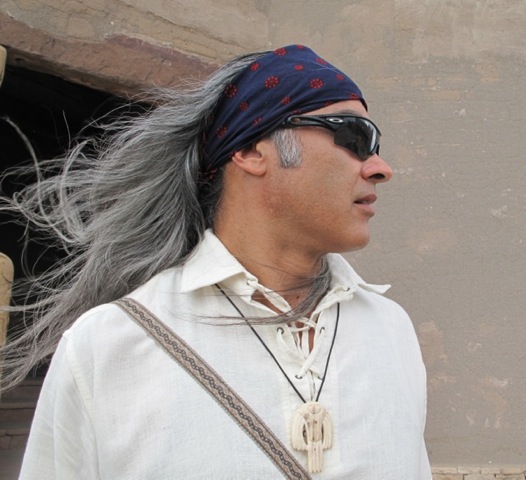
Sixtus Dominguez
Master of Community and Regional Planning, 2018
Job Title: Tribal Injury Prevention Program Coordinator
Agency or Organization: Albuquerque Area Southwest Tribal Epidemiology Center (AASTEC) under the Albuquerque Area Indian Health Board, Inc.
As a recent UNM MCRP alumni coupled with earlier undergraduate studies in Indigenous & Native American Studies, I feel very prepared and excited that my academic, practical, and studio work in CRP have provide all the tools I need to succeed and excel in this Tribal Injury Prevention career in holistic terms of academic, professional, and tribal culturally appropriate health design and planning practices to foster sustainable communities.
What tasks and responsibilities are involved in your work?
The long term goal of our Injury Prevention (IP) program is to reduce the burden of unintentional injuries related to falls and motor vehicle accidents among American Indian communities in our service area, with an emphasis upon approaches that weave together evidence-based strategies at the community, policy, system and environmental levels. The performance of my duties are in compliance with guidelines established by AIHB and by Indian Health Service (IHS). Some of my responsibilities include: to plan, implement, and evaluate effective IP strategies that match AASTEC’s work plan; Continue to develop and participates in tribal and NM State IP coalitions (i.e., Co-Chair,support team, advisory group) to share resources and expertise; Continue to develop and maintain a data collection, analysis, and summary system(s) to set program priorities, plan and implement activities, and evaluate progress; Submit semiannual and continuing required reports to IHS Headquarters, the Project Officer, and the monitoring contractor; Submit semiannual financial status reports and provide assistance to ensure reports are submitted on time; Participate in conference calls scheduled by the monitoring contractor; Help to plan and participate in site visits conducted by the monitoring contractor and/or the Project Officer; Contribute at least once per year to the Tribal Injury Prevention Tribal Injury Prevention Cooperative Agreement Program (TIPCAP) newsletter; Attend the annual TIPCAP workshop and present a poster with updated data; Regularly communicate with the Project Officer through phone calls, emails, or site visits; Travel to tribal communities to participate in health fairs, provide trainings, conduct car seat clinic checkpoints as a Child Passenger Safety (CPS) Technician and provide and teach correct CPS seat installation to caregivers; Continue making face-to-face contact and relationship development with other programs strengthening collaboration and ultimately leading to increased Injury prevention; Participation and partnering with the National Indian Council On Aging (NICOA); Attend, participate and pass IHS IP core courses and trainings; Attend and participate in Injury Prevention specific national, regional and local conferences.
What projects are you currently working on?
I am currently working on digitizing and filing, and inputting data documents; providing technical assistance to tribes; Planning, scheduling, and facilitating trainings, Car Safety Seat, Checkpoints and coalitions; Maintaining inventory of items we use and provide; Maintaining contact lists of partner tribal, departments; Creating, updating, and culturally adapting small media products, flyers and announcements, sending out IP information that we receive from IHS, NMDOH, CDC, etc.; providing or finding technical assistance to tribes, working with diverse individuals that provide IP to Tribes, Nations, and Pueblos.
What makes your work personally rewarding and how has it impacted you and your community?
My work is personally fulfilling in endless ways. Being able to be part of injury prevention work and the AASTEC epidemiology team for Indigenous peoples of is very exciting! I see results and impacts immediately. Injury Prevention helps to sustain, develop, and build community one person at a time, from the very youngest members to the eldest, collectively and simultaneously, therefore the benefit is to tribes and tribal peoples and their healthier future, this in turn positively affects the greater region’s community and public health.
How has the CRP program prepared you for your career?
As a recent UNM MCRP alumni coupled with earlier undergraduate studies in Indigenous & Native American Studies, I feel very prepared and excited that my academic, practical, and studio work in CRP have provide all the tools I need to succeed and excel in this Tribal Injury Prevention career in holistic terms of academic, professional, and tribal culturally appropriate health design and planning practices to foster sustainable communities. Further, I am excited to have continuing relationships and resources at the School of Architecture and Community and Regional Planning, AAIHB & AASTEC, to continue my lifelong learning.
Posted on April 6, 2021
